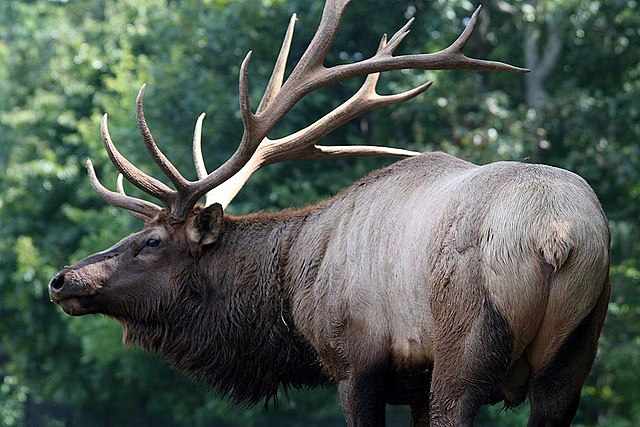12 Days of Wild: Retelling Rudolph - Were Santa’s Reindeer actually female?
- Wild Magazine
- Dec 4, 2023
- 5 min read
Updated: Dec 5, 2023
Madeleine Waite delves into the real science hidden behind Hollywood magic.
Rudolph the Red-Nosed Reindeer has historically been a symbol of holiday cheer, leading Santa's sleigh with his shiny nose, ever since his first appearance in the 1939 Christmas poem by Robert L May. The portrayal of Rudolph as male has been consistent in the cascade of films and media from 1964’s ‘The Story of Rudolph the Red Nosed Reindeer’ stop motion animation, frequently considered one of the greatest Christmas movies ever made, to the 1998 ‘Rudolph the Red Nosed Reindeer: The Movie’ cartoon.
But what if this beloved Christmas character, and his magical all-male herd, aren't exactly what we believed? To unravel the biological mysteries of Santa's reindeer and discover why they, including Rudolph, might actually be females, we must delve into the real science hidden behind Hollywood magic.

Hermey the elf and Rudolph, from the 1964 stop-motion. Image Credit: Wikimedia Commons
Deciphering the gender code; it’s all in the antlers.
Distinguishing between male and female reindeer can be challenging, especially in the absence of obvious visible sexual clues. Antlers, however, play a vital role in differentiating adult male and female deer, providing the first hints to help us decipher the gender of Santa’s sleigh team. Our instinct when sexing any species of deer is to assume that an absence of antlers is associated only with females. This pattern is observed in many eminent wild deer species such as the red fallow deer, majestic elks and the beautiful roe deer, reminiscent of the adored Disney icon, Bambi.
From left to right: a red Fallow deer (Dama dama), and a large elk (Cervus canadensis). Image credits: Madeleine Waite (Left), Wikimedia Commons (Right).
However, Santa’s sleigh squad is actually comprised of domesticated caribou, commonly known as reindeer. It is the males of this species that are devoid of antlers during wintertime, while pregnant females retain theirs until spring when they give birth. This unique characteristic allows the expectant mothers to protect enough food resources to survive the harsh winter climates and provide ample nutrients to their developing calves. As for the males, their antlers become redundant once they have achieved mating.
Consequently, the young bucks and magnificent stags shed them at the end of autumn in preparation to regrow new, larger antlers that sit like ostentatious crowns upon their heads in the next mating season. In the festive tableau of Santa's sleigh, every reindeer proudly displays its antlers. Therefore, we might question the choices Santa has made in caring for these magical creatures as the conspicuous antlers raise the possibility that Santa's reindeer could really be pregnant females, challenging the gender roles in the original tale.
Alternatively, perhaps Santa uses a common castration technique, used by many local sledders in Alaska, to avoid the poor animal husbandry of using pregnant females to fly his sleigh on Christmas Eve. All new reindeer antlers are adorned in a soft, velvet fur which is often misconceived as providing a weatherproofing function during the colder months, much like the woolly bobble hats we use to keep our heads warm. In fact, this fuzzy layer acts as a protective sheath of concentrated blood vessels and nerves that the antler bones solidify and grow beneath until rutting season when it is shed.
A curious phenomenon will occur if an adult male reindeer is castrated in the winter after the velvet shedding. The castrated males’ (steers) bare antlers are lost in a matter of weeks and replaced with a new permanently velveted set that continuously grow throughout their lives, producing elaborate headpieces called ‘perukes’. Steers are frequently used for sledding instead of stags or bucks due to their greater strength, robust build and absence of fatigue from the rutting season, making them perfect candidates to pull a heavy sleigh of presents all through the night.
From left to right: the velvet fur covering that protects a reindeer’s growing antlers, and a reindeer demonstrating the ‘velvet shed’ occurring just before the rutting season. Image credits: Kevin B (Left), Kristina Estifeeva (Right).
Real Science Meets Movie Magic.
By combining the depiction of Santa’s reindeer in various media, based on the 1939 poem, we can explore the scientific accuracy of the cinematic portrayal of Rudolph and his sleigh mates, to decide whether Santa uses steers or pregnant females to guide his sleigh. Whilst the original poem by Robert L. May doesn’t specifically mention the gender of any of the reindeer, most subsequent renditions of the story portray Rudolph as a young male calf and the rest of the sleigh team as adult male bucks. However, in the 1964 animated movie we watch as Rudolph matures from a sweet calf into a handsome young buck. And so, understanding the gender of Santa's most famous reindeer, Rudolph, involves a keen eye for antler details.
Size matters in adult deer. Males showcase larger (20-50 inches) and more intricately branched antlers compared to females, as a testament to their dominance during the mating season. When it comes to the offspring, all reindeer calves sport small, tine-less antlers, making it challenging to discern gender. Yet, the secret lies in the number of tine split offs on the reindeer antlers once the calf finishes maturing. These distinctive features become reliable indicators, pointing to adult females when there are less than two tines and males when exceeding two.










A really interesting article and very well written .